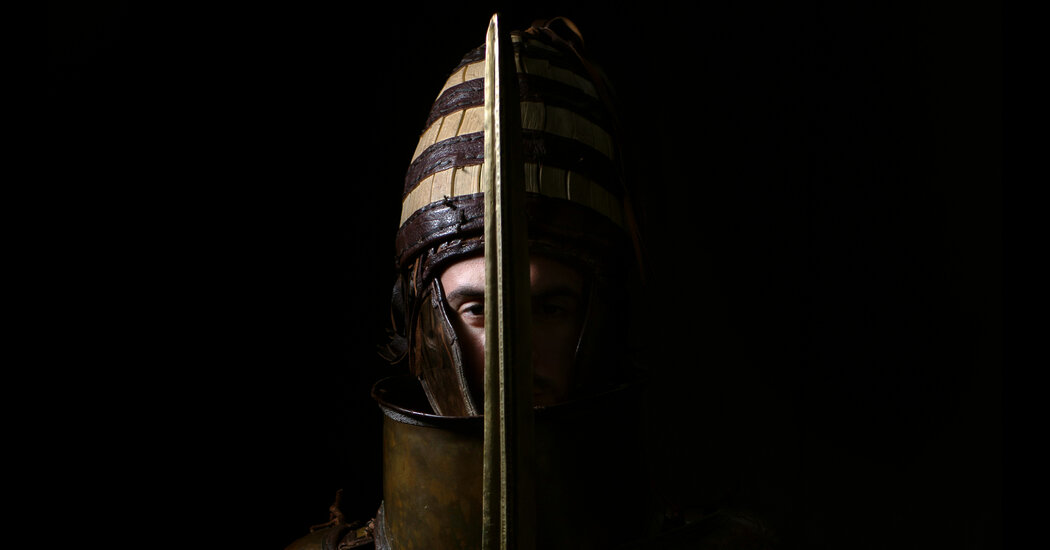One by one, Greek soldiers, bellies full from a breakfast of red wine and dry bread, armed and clad themselves in a bulky, buglike suit of armor as they prepared for battle.
They aimed their spears at wooden targets, and their chariot was connected to a treadmill motor, but for 11 hours, these elite soldiers from the Hellenic Armed Forces pretended to fight as if it was the 15th century B.C.
They had been recruited for a study to determine if the Dendra panoply, a suit of armor from 3,500 years ago considered to be one of the oldest known from the Bronze Age in Europe, could be worn in battle. Or if it was only ceremonial, as some scholars have previously argued.
The soldiers wore a replica of the suit, and scientists tracked their blood-glucose levels, heart rates and other physiological measures, finding that the men’s bodies could handle the strain of the armor, according to a paper published in the journal PLOS One on May 22.
Andreas Flouris, the lead author of the paper and the director of the FAME Lab at the University of Thessaly in Volos, Greece, where the battles took place, said that the simulated combat, as well as other research components, showed that the armor would have been “a very advanced piece of military technology” at the time.
“If you’re carrying a piece of wood or a stone or maybe something with a bit of bronze in the front, like a spear, somebody wearing this armor looks like a giant robot in front of you,” said Dr. Flouris, a professor of physiology at the University of Thessaly.
